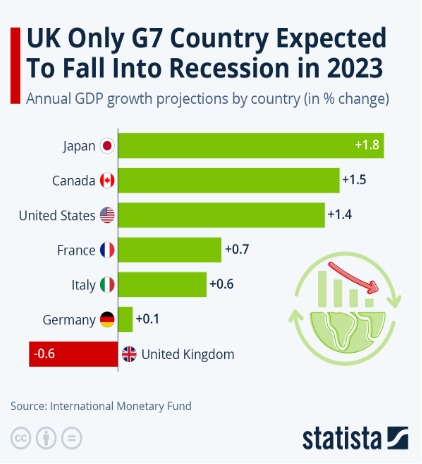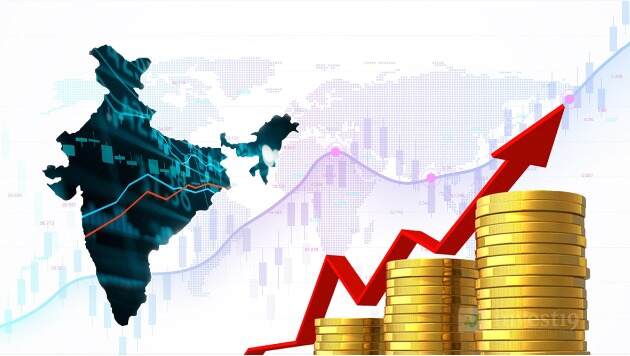India’s economy sprang a surprise with an 8.4 percent surge in GDP growth during the third quarter (October-December), as a result of which the country’s economic growth rate for the financial year 2023-24 is now estimated at a robust 7.6 percent, figures released by the National Statistics Office on Thursday showed.
Introduction
The Indian economy remained resilient with a robust 7.6 percent growth rate of GDP in FY 2023-24 over and above 7 percent growth rate in FY 2022-23,” the Ministry of Statistics said.
The double-digit growth rate of the construction sector at 10.7 percent, followed by a good growth rate of the manufacturing sector of 8.5 percent boosted the GDP growth in FY 2023-24, according to it.
The Ministry of Statistics has also revised the growth rate for Q1 of the current financial year to 8.2 percent from the earlier estimate of 7.8 percent and the growth rate for Q2 from 7.6 percent to 8.1 percent after receiving the latest updated figures.
Recession gap and its causes
Two of the world’s leading economies – Japan and the UK – recently entered into recession, highlighting the financial struggles that countries have been facing after the COVID-19 pandemic. Britain recently revealed a 0.3 percent contraction in the fourth quarter of 2023 and has officially entered a recession. This economic setback poses a formidable challenge for Prime Minister Rishi Sunak, whose Conservative party faces the prospect of a general election later this year.
Indian economy is benefiting from growing interest from multinationals, which see the country as a key alternative manufacturing base in the context of developed economies’ supply chains.
The gap between developed and emerging nations is shrinking, with India now all set to capitalize on the opportunity to become a significant player in the global economic landscape. The shifting dynamics present a moment for India to assert its influence and contribute substantially to global growth in the coming years.
How did it compile?
The Advance Estimates of National Income are indicator-based and are compiled using the benchmark-indicator method i.e. the estimates available for the previous year (2022-23) are extrapolated using the relevant indicators reflecting the performance of sectors.
The First Advance Estimates (FAE) for 2023-24 were based on minimal data and used Provisional Estimates of 2022-23 as benchmark estimates, according to the official statement.
For a compilation of the Second Advance Estimates (SAE) 2023-24, the Provisional Estimates of 2022-23 used at the time of FAE have been replaced by First Revised Estimates (FRE) 2022-23 which have been compiled using industry-wise/institution-wise detailed information. The growth of the Indian economy is resistant.
Thus, variations in the SAE from the FAE are attributed to the revision of benchmark estimates and additional data available on various indicators like CPI, IIP, Revised Estimates of fiscal data, financial results of listed companies, etc. used for compiling the estimates for 2023-24.
Quartered estimation of India’s economy
The quarterly estimates of previous years and the first and second quarter estimates of 2023-24 released earlier have also been revised by the revision policy of National Accounts, the Ministry’s statement added.
The latest data show that the Indian economy is keeping up its growth momentum as the world’s fastest-growing economy which is seen as a bright spot amid the global slowdown.
Surpassing Japan and the UK
India’s economy has shown remarkable resilience, growing at 8.4% during the third quarter of the fiscal year 2023-24, as reported by the National Statistical Office (NSO). This robust growth comes despite the challenges posed by the COVID-19 pandemic, which has affected economies worldwide. The positive performance was driven by sectors such as manufacturing, mining, and quarrying12.In contrast, both Japan and the UK have faced economic setbacks:
- Japan: The country experienced a prolonged period of economic stagnation known as the “Lost Decades”. This phenomenon began in the 1990s after the collapse of the asset price bubble. From 1991 to 2003, Japan’s GDP grew at an annual rate of only 1.14%, significantly lower than other industrialized nations. The recent technical recession in Japan has further impacted its economic standing.
- UK: The UK faced a recession in 2020 due to the impact of the COVID-19 pandemic, with the economy shrinking by 20.4% in the second quarter. Although it rebounded later, the country continues to grapple with economic challenges.
Despite these global economic fluctuations, India’s economic growth trajectory remains impressive, and it is expected to maintain its position as one of the world’s fastest-growing economies. However, policymakers must continue to address the consequences of the pandemic and other external factors to sustain this growth.

Yearly data on economy invested
The gross domestic product (GDP) had expanded by 2.5 percent in the corresponding January-March period of 2020-21, according to the NSO. The Economic Survey tabled in Parliament in February had estimated the GDP growth for the current fiscal (2022-23) in the range of 8 – 8.5 percent. According to the NSO data, the Indian economy’s real GDP grew to ₹147.36 lakh crore from ₹135.58 lakh crore in 2020-21.
Rising global commodity prices have sparked concern among policymakers, with the Reserve of India (RBI) announcing its first interest rate hike nearly four years earlier this month. The
government’s chief economic adviser V Anantha Nageswaran ruled out the risk of stagflation in India as the country is better placed than other nations.
The stagflationary risk to India is quite low compared to other countries. Stagflation is when both inflation and unemployment rates are high with moderation in GDP growth. Prime Minister Narendra Modi’s government earlier this month announced tax breaks to offset higher food and petrol costs. Consumer inflation hit 6.95 percent in March, according to the Reserve Bank of India, which slashed its yearly growth forecast to 7.2 percent.
Conclusion
Surpassing the expectations of analysts, India’s economy and Gross Domestic Product (GDP) registered a robust growth of 8.4 percent on an annual basis in the third quarter (October-December), as against 8.1 percent in the previous quarter, data released by the National Statistical Office (NSO) showed Thursday.
In the financial year 2023-24, India’s real GDP (measured at constant 2011-12 prices) is estimated to have grown by 7.6% compared to the previous year’s growth rate of 7.0% in FY 2022-23. This robust growth was supported by a double-digit growth rate in the Construction sector (10.7%) and a healthy growth rate in the Manufacturing sector (8.5%).
– RIYA SINGH
MUST READ: INDIAN EXAMINATION SYSTEM AND THE PUBLIC EXAMINATIONS BILL





